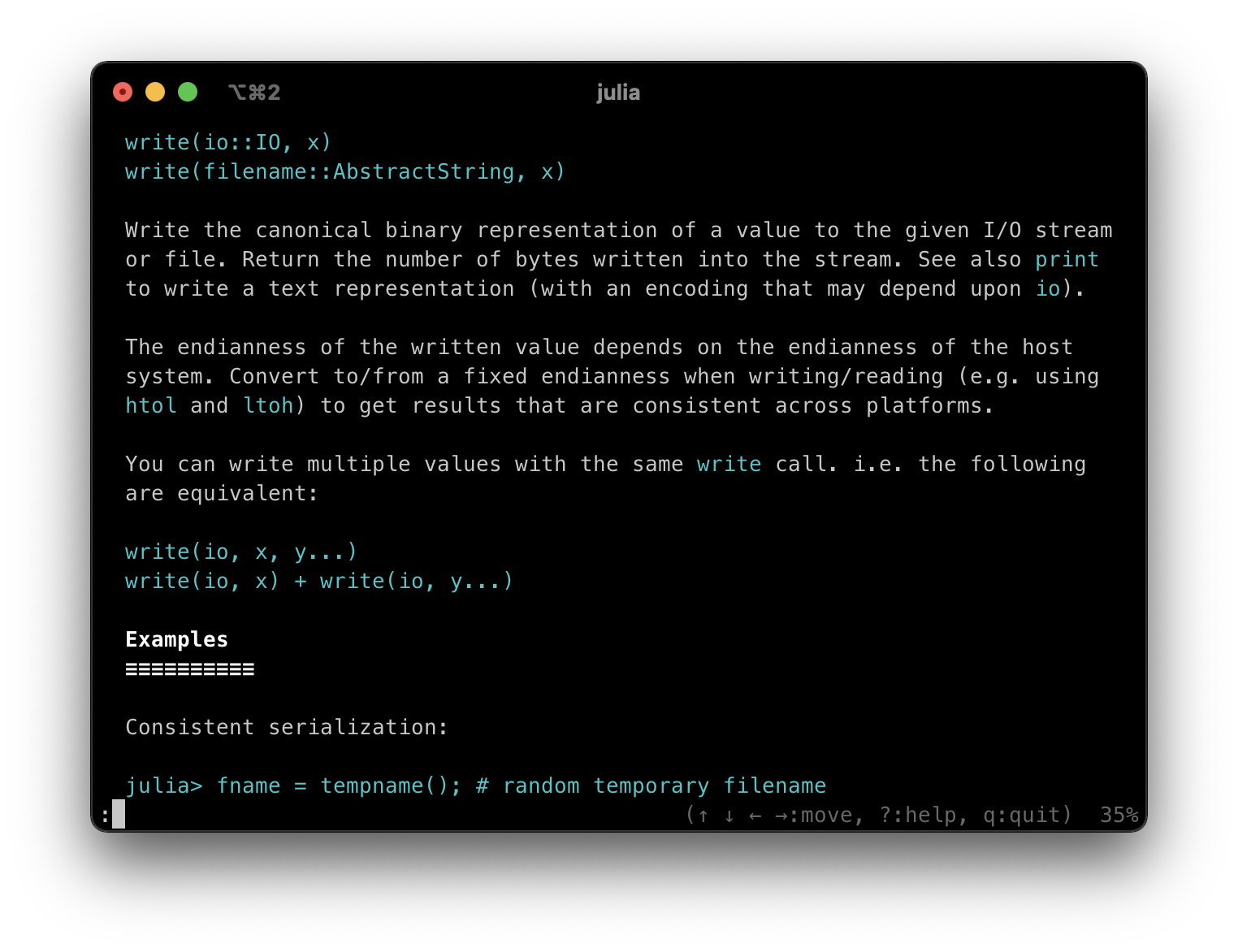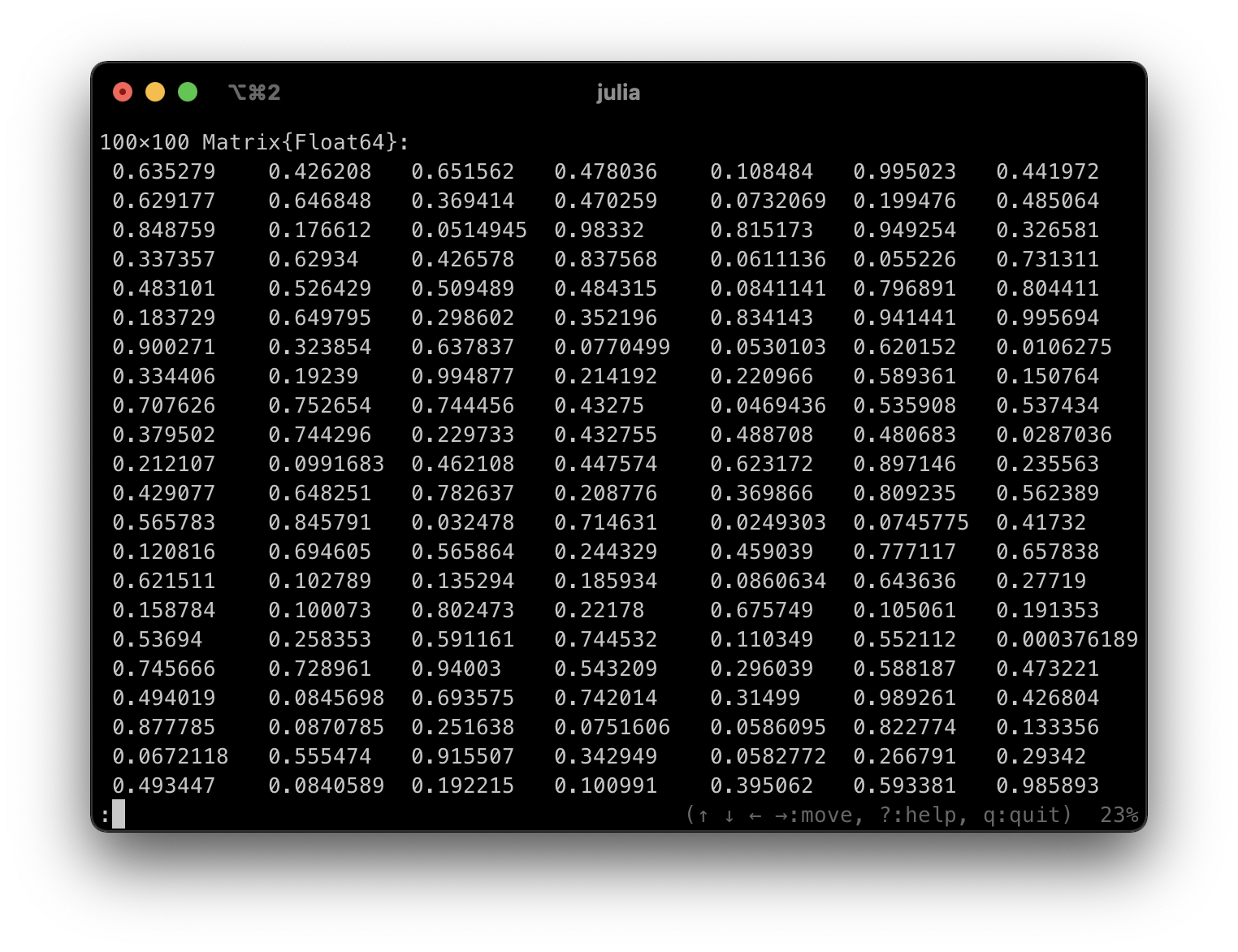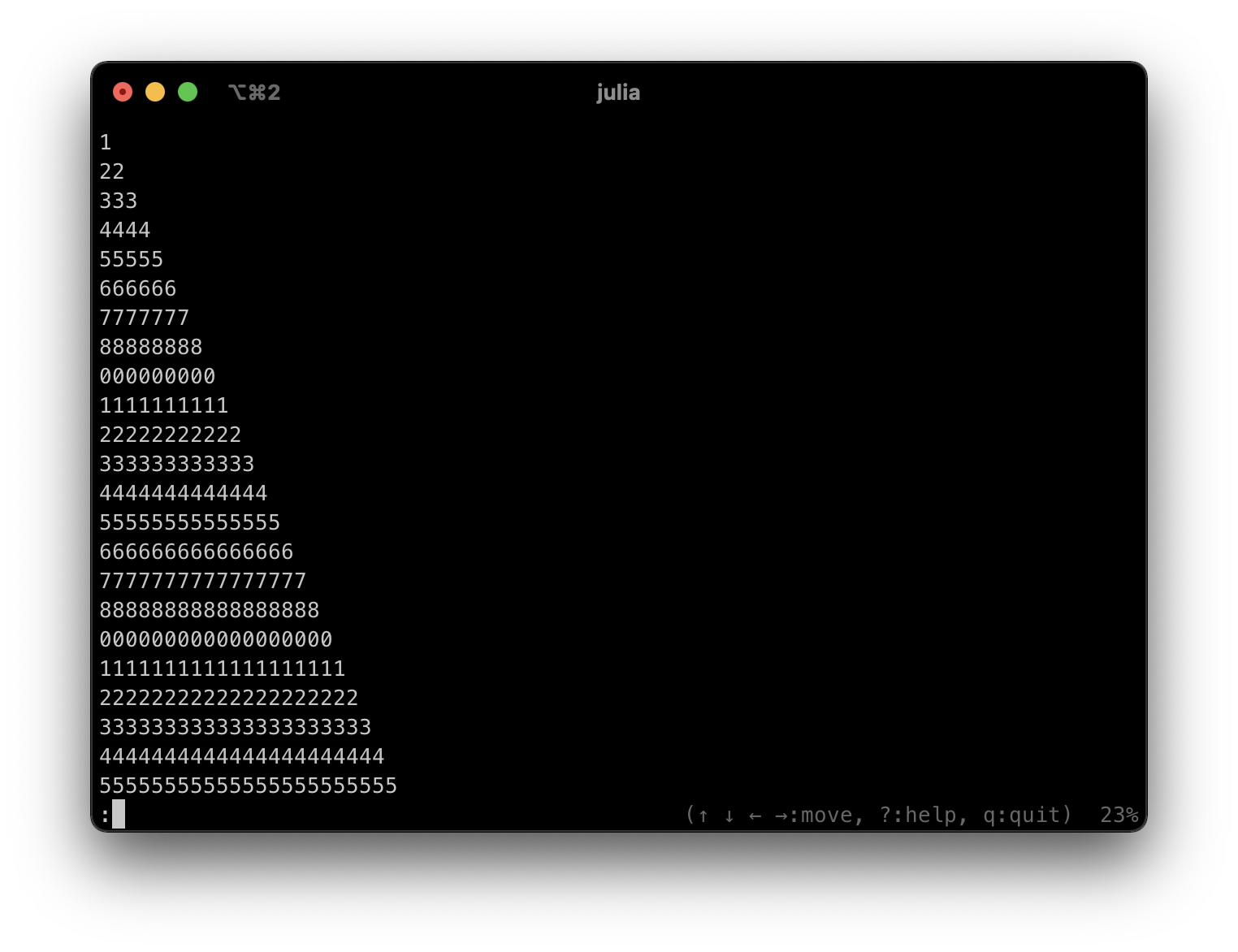Usage
Getting started
The pager is called using the function pager. If the input object is not a AbstractString, then it will be rendered using show with MIME"text/plain". Thus, you can browse a large matrix, for example, using:
julia> rand(100,100) |> pagerIt is also possible to use the pager to browse the documentation of a specific function:
julia> @doc(write) |> pagerAll the functionalities can be seen in the built-in help system, accessible by typing ? inside the pager.
Helpers
The following macros are available to help calling the pager.
@help
This macro calls the help of any function, macro, or other object and redirects it to the pager:
julia> @help write
@stdout_to_pager
This macro redirects all the stdout to the pager after the command is completed:
julia> @stdout_to_pager show(stdout, MIME"text/plain"(), rand(100,100))
This macro also works with blocks such as for loops:
julia> @stdout_to_pager for i = 1:100
println("$(mod(i,9))"^i)
end
REPL Modes
TerminalPager.jl comes with a REPL mode that automatically renders the command output to a pager if it does not fit the screen. To access this mode, just type | at the beginning of the REPL command line. If the mode is load correctly, the prompt julia> is changed to pager>.
In pager mode, you can also type ? at the beginning of the command line to access the pager help mode. In this case, the prompt is changed to pager?>. Any docstring accessed in this mode is rendered inside a pager. By the default, we use the alternate screen buffer, allowing to keep the screen content after exiting the pager.